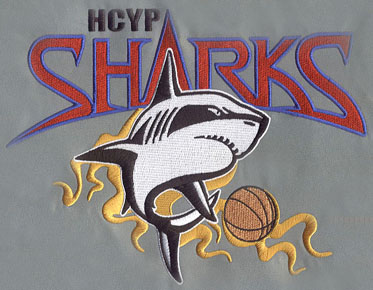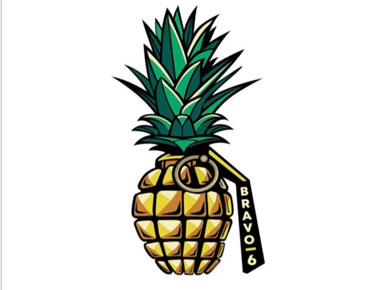Beyond Fabric: Exploring Unique Surfaces for Embroidery Digitization
Embroidery has come a long way from its origins as a decorative craft primarily used on fabric. Today, embroidery digitization has opened up a world of creative possibilities, allowing intricate designs to be stitched onto a wide variety of surfaces beyond traditional fabrics. In this comprehensive guide, we will delve into the exciting realm of unique surfaces for embroidery digitization, exploring the materials, techniques, and creative opportunities they offer.
The Evolution of Embroidery
Embroidery, with its rich history dating back thousands of years, has always been an art form that adapts and evolves. Traditionally, it adorned garments, linens, and textiles, adding intricate patterns and designs that were both functional and aesthetically pleasing. However, the advent of technology and embroidery digitization has pushed the boundaries of this craft.
Embroidery Digitization: A Brief Overview
Before we delve into the world of unique surfaces, let's briefly touch upon embroidery digitization. It's the process of converting artwork, logos, or designs into a digital format that can be read and executed by computerized embroidery machines. This digitization process involves defining stitch types, lengths, and directions, allowing for precision in recreating intricate designs on various surfaces.
Exploring Unique Surfaces for Embroidery Digitization
Now, let's embark on a journey to explore the diverse range of surfaces that can be enhanced and transformed through embroidery digitization:
1. Leather and Faux Leather
Leather, with its luxurious texture and durability, is an excellent canvas for embroidery. It's commonly used for personalizing jackets, bags, wallets, and even footwear. Faux leather, which mimics the look and feel of real leather, offers a cruelty-free alternative.
2. Denim and Jeans
Denim is a versatile and popular material for embroidery. From jeans to jackets, denim provides a rugged backdrop for both intricate and edgy designs. Embroidered jeans have become a fashion statement, showcasing creativity and personal style.
3. Wood
Yes, you read that right—wood! With the right techniques, it's possible to embroider onto wooden surfaces. This unique approach has gained traction in the world of home decor, creating stunning pieces like embroidered wooden frames and wall art.
4. Cork
Cork fabric, often used in accessories and home decor, can also be adorned with embroidery. Its natural texture adds a unique dimension to embroidered designs, making it an eco-friendly and stylish choice.
5. Canvas and Vinyl
Canvas bags and vinyl materials offer a robust surface for embroidery digitization. They are frequently used for promotional items, such as tote bags, banners, and promotional displays.
6. Paper and Cardstock
Embroidery on paper and cardstock has gained popularity in the world of greeting cards and papercraft. It adds a tactile and visually appealing element to stationery, invitations, and scrapbooking.
7. Corkboard and Bulletin Boards
Corkboard surfaces can be enhanced with embroidery, creating functional and decorative bulletin boards. These are perfect for organizing your space while adding a touch of personalization.
8. Plastic and Acrylic
Plastic and acrylic materials offer a modern and sleek surface for embroidery. They are commonly used in creating custom patches, keychains, and promotional merchandise.
9. Burlap and Linen
While these materials are not unusual in themselves, their rustic texture and appearance make them unique choices for embroidery. Burlap and linen create a charming contrast with delicate embroidery designs.
10. Neoprene
Neoprene, often associated with wetsuits, can also be used for embroidery. It's a versatile material for creating personalized items like laptop sleeves and bottle koozies.
Techniques for Embroidering Unique Surfaces
Embroidering on non-fabric surfaces may require special techniques and considerations. Keep in mind the following key points:
1. Stabilizers
When embroidering on unique surfaces, the choice of stabilizer is important. Stabilizers provide support and prevent the material from puckering or stretching during embroidery. Different stabilizers, such as cut-away and tear-away, may be required based on the surface.
2. Needle Selection
Choose the appropriate needle for the surface you're embroidering. For example, leather and denim may require heavier needles to penetrate the material effectively.
3. Design Adaptation
Adapt your embroidery design to suit the unique surface. Consider factors such as stitch density and complexity to ensure a successful outcome.
4. Hooping Techniques
Proper hooping is essential to maintain tension and stability during embroidery. Some surfaces may require specialized hooping techniques or additional accessories like adhesive backing.
5. Machine Settings
Adjust your embroidery machine settings, including stitch speed and tension, to accommodate the chosen surface. Test runs and adjustments may be necessary to achieve the desired results.
Creative Opportunities and Applications
Embroidery on unique surfaces opens up a world of creative opportunities and applications:
1. Customized Gifts
Personalized and embroidered items make for thoughtful gifts. Consider embroidering names, dates, or special messages on leather wallets, wooden frames, or denim jackets.
2. Branding and Promotion
Businesses can use embroidered promotional items to build brand recognition. From branded tote bags to keychains, embroidery adds a professional touch to promotional merchandise.
3. Home Decor
Embroidery on wood, cork, or burlap can transform home decor items. Create embroidered wall art, coasters, or decorative throw pillows to add a unique touch to your living spaces.
4. Fashion and Apparel
Unique surface embroidery has made its mark in fashion. Designers incorporate embroidery on denim, leather, and faux leather garments to create statement pieces that stand out.
5. Stationery and Papercraft
Add an elegant and tactile dimension to stationery, greeting cards, and scrapbooking with embroidered paper and cardstock elements.
Challenges and Considerations
While embroidery on unique surfaces offers creative freedom, it comes with its challenges and considerations:
1. Material Compatibility
Not all materials are suitable for embroidery. Ensure that the surface can withstand the stitching process without damage or warping.
2. Machine Capability
Check if your embroidery machine is compatible with the materials you intend to embroider. Some surfaces may require specific machine adaptations or accessories.
3. Skill Level
Embroidering on unique surfaces may require advanced skills and experience. It's advisable to practice on similar materials before attempting a final project.
4. Cost
Materials like leather and wood can be more expensive than traditional fabrics. When planning your projects, consider the cost of materials.
Conclusion
Embroidery digitization has evolved beyond traditional fabrics, offering a world of creative possibilities on unique surfaces. Whether you're crafting personalized gifts, adding branding to promotional items, or enhancing your home decor, embroidery on non-fabric materials can elevate your projects to new heights. While it presents challenges and considerations, the rewards are well worth the effort. So, embrace the world of unique surface embroidery, and let your creativity run wild as you explore the endless opportunities it offers.


